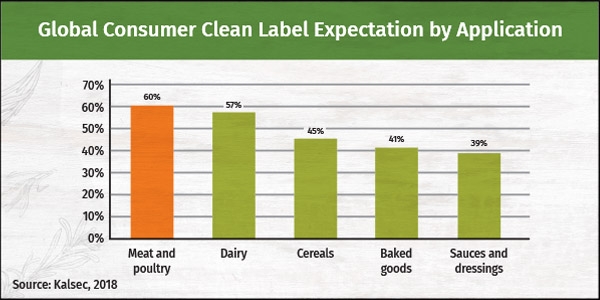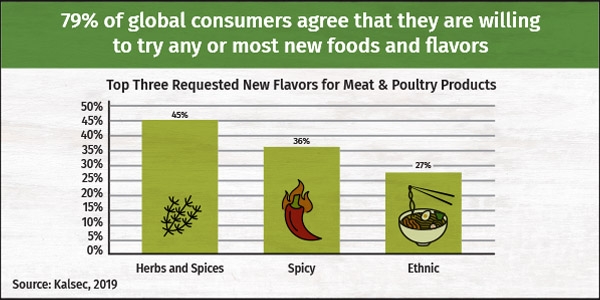Promotional Features
Want to stay competitive in the growing protein space? Look no further than consumer preferences.
In a category once driven primarily by meat, consumers gave little thought to where their protein came from. Their choices were simple: beef, poultry, pork or seafood.
But now, with the multitude of choices available, the category has become increasingly competitive, giving today’s shoppers the opportunity to seek specific qualities in the protein they choose. From dedicating more consideration to where the protein comes from and the manner in which it was raised and processed, to placing emphasis on quality and taste factors, consumer habits and preferences provide valuable insights into how existing products can evolve—and new ones can be created—successfully.
Environmental and Health Concerns
Now, more than ever, consumers are looking into the source of animal-based proteins. From how the animal was raised to where it came from, meat-based proteins are preferred when they offer the specific claims consumers are looking for. In a study conducted by Kalsec®, 60 percent of global consumers surveyed said they expected a clean label in meat and poultry applications. This leads over dairy, cereals, baked goods, sauces and dressings. What matters most on a label? The same study found that “no artificial ingredients” and “fresh ingredients” led the way. The opportunity for food manufacturers is to find natural alternatives to the synthetic ingredients they once relied on for maintaining freshness, preserving color and enhancing flavor.
Curiosity About New Products
Consumer curiosity has fueled increased interest in plant-based proteins. And many manufacturers have responded to consumer demands. Even with the number of options available, opportunity still remains, especially with plant-based meat alternatives. For those consumers moving toward a flexitarian diet, there is curiosity about plant-based products because of the perceived health benefits. But, because they remain meat eaters, they want their plant-based alternatives to be precise analogs—in other words, they want alternatives that look, taste and perform like their animal-based counterparts. Color, taste and texture are vital considerations. Some entries into the marketplace have been successful—and those are the ones that are thriving. Improvement on these attributes is critical to the success of new and existing competitors.
The possibilities for innovation go beyond plant-based proteins. Animal-based protein is by no means out of the picture. In fact, according to Mintel, 67 percent of U.S. consumers agree that meat is essential to a balanced diet. Within traditional animal-based protein applications, flavor innovation can help pique consumer curiosity. Kalsec reports that 79 percent of global consumers are willing to try most new flavors. Herbs and spices lead the way, followed by spicy and ethnic flavors. Many consumers are looking for pre-seasoned or marinated meats that help them create quality meals, quickly and conveniently to fit into their busy lifestyles.
Taste Is Still King
No matter what is driving consumers to make their protein decisions, the product must taste good in order to achieve repeat purchase. Paying attention to freshness in animal proteins and discovering the right profiles for marinades and other flavorings will help set your products apart.
When it comes to plant-based proteins, the same considerations must be made to the taste and appearances as animal-based proteins, and that includes appearance. As with all foods, we eat with our eyes first, and color and stability—especially in see-through packaging—is an important element of shelf appeal. Proteins must take the same care as other foods by incorporating the right color and antioxidant solutions to ensure the correct hue on the shelf as well as during cooking.
The reasons behind consumer choice are forever changing, but they offer us keen insight into how to develop products that can stand out in a competitive product marketplace. As diets and lifestyles continue to create higher demand for protein—both animal and plant-based—paying attention to these preferences is a key factor in creating products that earn both trial and repeat purchase.







